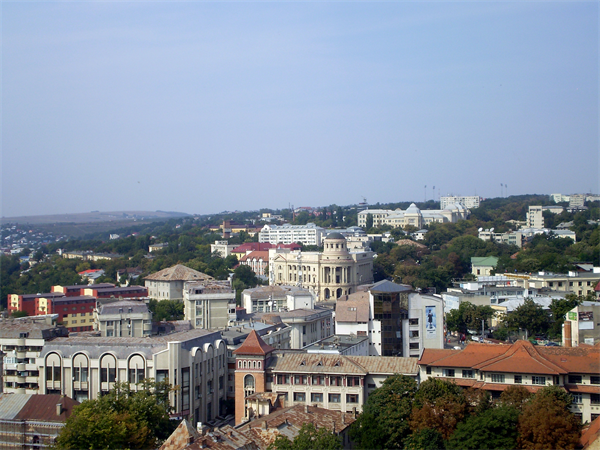- CURRENT LOCATION: HOME
- >> About Shaanxi
- >> Global Associations
- >> Sister Cities
- >>
- Xi'an
Iasi (Romania)
2017-04-15 13:39:35 , Source : The Government Website of Shaanxi Province
Iasi is the largest city in eastern Romania and the seat of Iasi County. Located in the historical region of Moldavia, Iasi has traditionally been one of the leading centres of Romanian social, cultural, academic and artistic life. The city was the capital of the Principality of Moldavia from 1564 to 1859, then of the United Principalities from 1859 to 1862, and the capital of Romania from 1916 to 1918.
Known as The Cultural Capital of Romania, Iasi is a symbol in Romanian history. The historian Nicolae Iorga said "There should be no Romanian who does not know of it". Still referred to as The Moldavian Capital, Iasi is the main economic and business centre of the Moldavian region of Romania.
At the 2011 census, the city proper had a population of 290,422, making it the fourth most populous in Romania. With 465,477 residents (as of 2014), the Iasi urban area is the second most populous in Romania (after Bucharest), whereas more than 500,000 people live within its peri-urban area. Home to the oldest Romanian university and to the first engineering school, Iasi is one of the most important education and research centres of the country, and accommodates over 60,000 students in 5 public universities. The social and cultural life revolves around the Vasile Alecsandri National Theater (the oldest in Romania), the Moldova State Philharmonic, the Opera House, the Iasi Athenaeum, a famous Botanical Garden (the oldest and largest in Romania), the Central University Library (the oldest in Romania), the high quality cultural centres and festivals, an array of museums, memorial houses, religious and historical monuments.
Culture
Major events in the political and cultural history of Moldavia are connected with the name of the city of Iași. The great scholars of the 17th century, Grigore Ureche, Miron Costin and later Ion Neculce, wrote most of their works in the city or not far from it and the famous scholar Dimitrie Cantemir known throughout all Europe also linked his name to the capital of Moldavia.
The first newspaper in Romanian language was published in 1829 in Iași and it is in Iași where, in 1867, appeared under literary society Junimea, the Convorbiri Literare review in which Ion Creangă’s Childhood Memories and the best poems by Mihai Eminescu were published. The reviews Contemporanul and Viața Românească appeared in 1871, respectively in 1906 with great contributions to promoting Romanian national cultural values.
Many great personalities of Romanian culture are connected to Iași: the chronicler Nicolae Milescu, the historians and politics men Mihail Kogălniceanu or Simion Bărnuțiu, the poets Vasile Alecsandri or George Topârceanu, the writers Mihail Sadoveanu, Alecu Russo, or Ionel Teodoreanu, the literary critic Titu Maiorescu, the historian A.D. Xenopol, the philosophers Vasile Conta or Petre Andrei, the sociologist Dimitrie Gusti, the geographer Emil Racoviță, the painter Octav Băncilă, only to name a few.
Cultural events and festivals
Periferic is an international biennial of contemporary art organised in Iași, Romania by the Vector Association. Eight editions have taken place thus far.
FILIT (International Festival of Literature and Translation Iași) is an international yearly literature and translation festival organised in Iași, Romania by the Iaşi County Council through the Iaşi Museum of Romanian Literature. Three editions have taken place so far and the festival is recognised as one of the leading Central and Eastern European events of its kind. FIE (International Education Festival) is a yearly arts festival organised in Iași, Romania by the City Hall. Three editions have taken place thus far.
The Iași National Opera organises the Romanian Gala of National Operas, with the third edition taking place in 2015. A rock festival, Rock'n'Iași takes place in October. Gardner Jazz Festival is a local festival that started in 2014 and had its second edition in 2015. An aeronautics and art festival called Hangariada is organised each year in May.
Live music and various other artistic events (poetry nights, readings) are a habitual occurrence in the various bars and coffee shops the city has to offer.

Government Organizations



Other Links

Copyright@www.shaanxi.gov.cn All Rights Reserved
Registration Number:陕ICP备10004160号
